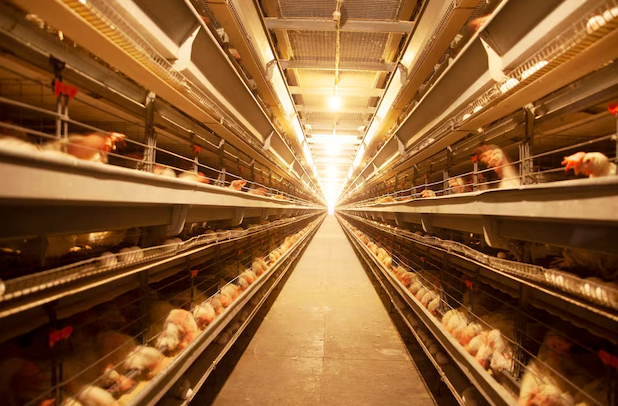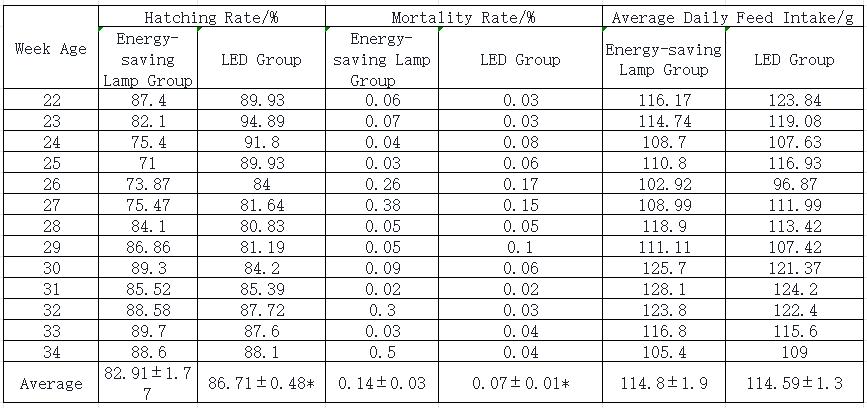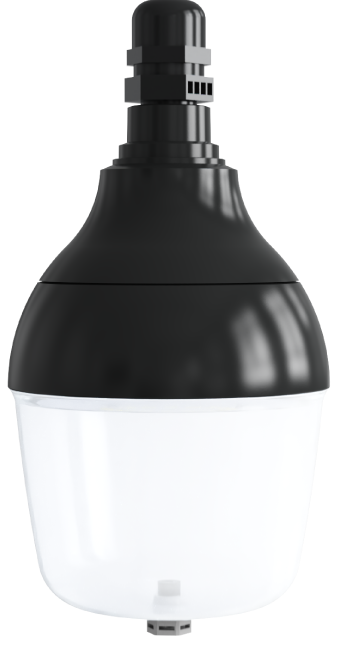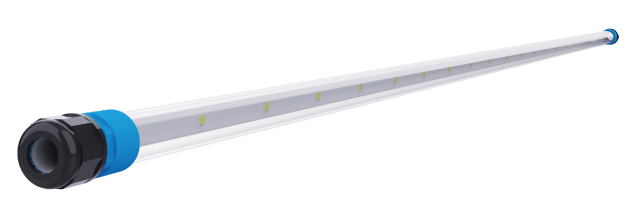Effects of Led Lights for Laying Hens on Production Performance

Directory:
1. Materials and Methods
2. Results and Analysis
3. Discussion
4. Ceramiclite Led Lights For Laying Hens
LED lamps, including those designed as LED lights for laying hens, offer several benefits such as low energy consumption, long lifespan, high brightness, and being non-toxic and eco-friendly. These LED lights for laying hens operate on direct current and utilize diodes for light emission, achieving a very high electro-optical conversion efficiency. When compared to incandescent and energy-saving lamps commonly used in laying hen farms, LED lights for laying hens stand out due to their energy efficiency, extended lifespan, lack of radiation, cleanliness, and absence of flicker.
The energy usage of LED lights for laying hens is only 10% that of incandescent lamps with equivalent brightness, 25% of fluorescent lamps, and 50% of energy-saving lamps. Typically, LED lights for laying hens can last over 50,000 hours, while incandescent lamps last around 1,000 hours and energy-saving lamps about 5,000 hours. Additionally, LED lights for laying hens are resistant to impact and less likely to break, which can significantly lower the frequency of bulb replacements, thereby reducing both the costs associated with purchasing lamps and the labor involved in changing them. Their materials are non-toxic and recyclable, minimizing potential environmental pollution from energy-saving lamps. Furthermore, since diodes in LED lights for laying hens operate unidirectionally and do not flicker, they are beneficial for eye protection. LED lights for laying hens also demonstrate strong environmental adaptability, functioning effectively in temperatures ranging from -35 to 45 degrees Celsius and humidity levels below 95%.
The aim of this experiment is to evaluate the impact of LED lamps on the production performance of caged laying hens and to assess the energy-saving benefits, providing insights for the promotion and use of LED lighting.
1. Materials and Methods
1.1 Experimental Animals
A total of 15.559 commercial laying hens, all 153 days old and of the Hy-Line Brown breed, were randomly assigned to two groups: the LED group (7.841 hens) and the energy-saving lamp group (7.718 hens). They were housed in two identical standardized laying hen facilities featuring three-tier cages, measuring 75 meters in length and 10 meters in width, equipped with windows, semi-enclosed structures, and automatic ventilation. Both groups received the same diet, adhering strictly to the nutritional standards for laying hens, with unrestricted access to food and water, and followed identical feeding management practices.
1.2 Lighting
3W LED lamps, manufactured and installed by Weifang Gerun Electronic Technology Co., Ltd., and standard 9W energy-saving lamps were found to have a consistent light color, both exhibiting a yellowish-green hue. When setting up the IEDD lamps and energy-saving lamps, it is important to adjust their positions and heights to ensure that the illumination intensity on the chicken head plane is uniform under both conditions, meeting the requirements for different growth stages. This was measured using the TES-1330A illuminance meter from Taiwan TES Electronics Industrial Co., Ltd. The uniformity of illumination (the ratio of the minimum illumination intensity on the chicken head plane to the average illumination intensity) should exceed 75%, with illumination intensity maintained between 10 and 12 lux. The lighting schedule and procedures for both groups were strictly followed according to the laying hen feeding and management manual, with the lights on for 16 hours each day during the experimental period, which lasted from April 7 to July 7. 2015. covering the ages of 22 to 34 weeks.
1.3 Recording and Testing Indicators
Throughout the experimental phase, daily records were kept of feed consumption, the number of dead and culled hens, and the total egg production.
1.4 Data Analysis
The experimental data were organized using Excel software, and one-way ANOVA was conducted using SAS. Duncan's method was applied for multiple comparisons, and the results were presented as "mean ± standard deviation."
2. Results and Analysis
2.1 Effect of LED Lighting on Production Performance During the First 3 Months of Laying
As shown in Table 1. the implementation of LED lighting for caged Hy-Line brown laying hens during their laying period resulted in a 3.83% increase in egg production and a 0.273% decrease in flock mortality, with significant weekly differences (P<2.05). This improvement may be attributed to the consistent light source provided by LED lights, which eliminates flickering, thereby promoting stability and reducing stress among the flock. While there was a slight increase in feed intake with LED lighting, this change was not statistically significant (P>3.05).
table1 Comparison of production performance between ordinary energy-saving lighting and LED lighting

2.2 Impact on Energy Savings
Based on the installation of 40 lights in each chicken coop, the enclosed chicken house operates daily. The results indicate a calculation for 16 hours of use. Given that LED bulbs can last up to 50.000 hours, compared to approximately 5.000 hours for standard energy-saving bulbs, the calculated outcomes are presented in Table 2.
table2 LED group, each chicken house, each lamp position, each year, various lamp usage and energy consumption calculation

The yearly electricity cost for each chicken house, which has 40 lamps, amounts to 630.4 yuan. If all 40 chicken houses on this farm, housing 600.000 laying hens and 160.000 commercial laying hens, switch to LED lamps, the total annual electricity cost would be 25.216 yuan. In contrast, using energy-saving lamps would result in an annual cost of 77.776 yuan. By opting for LED lamps, expenses could be reduced by 52.566 yuan, which is approximately 67.57%, indicating significant potential for energy savings.
3. Discussion
Research indicates that lighting affects the growth, sexual maturity, ovulation, and egg production of laying hens. The test results show that using LED lamps as the lighting source for caged laying hens does not negatively impact their laying performance during the egg-laying phase. This aligns with findings from Liu et al. and Yin et al. regarding laying hens, but the improvement in production performance observed in this experiment is more pronounced.
Economically, LED lamps can significantly lower the number of lamps and electricity costs, thereby reducing production expenses for farms and minimizing potential pollution from disposing of numerous fluorescent or energy-saving lamps. This approach aligns with contemporary low-carbon, eco-friendly production and sustainable development principles. Given the rising breeding costs and slim profit margins in the industry, this is particularly important. Therefore, using LED lamps for caged laying hens is safe, effective, energy-efficient, environmentally friendly, and cost-effective, making it a practice worth widespread adoption.
Energy-saving calculations suggest that each chicken, when provided with led lights for laying hens, can save 0.25 yuan annually. With the total number of laying hens in China reaching 1.492 billion in March 2006, if this technology, specifically led lights for laying hens, is implemented in half of the laying hen farms, it could lead to savings of 386 million yuan.
4. Ceramiclite Led Lights For Laying Hens
4.1 Led Laying Hens Lighting Bulb D80



5. Related Solution & Science
6. Related Blog
Poultry Lighting Management: Poultry Lighting Equipment Layout and Management
Broiler Lighting: Best Light for Chicken Brooder
Poultry House Lighting: Red/blue Light for Chicken Coop
Led Poultry Farm Lighting System: Best Poultry Lighting Controller
Poultry Farm Lighting: Characteristics of Lighting for Poultry Farm